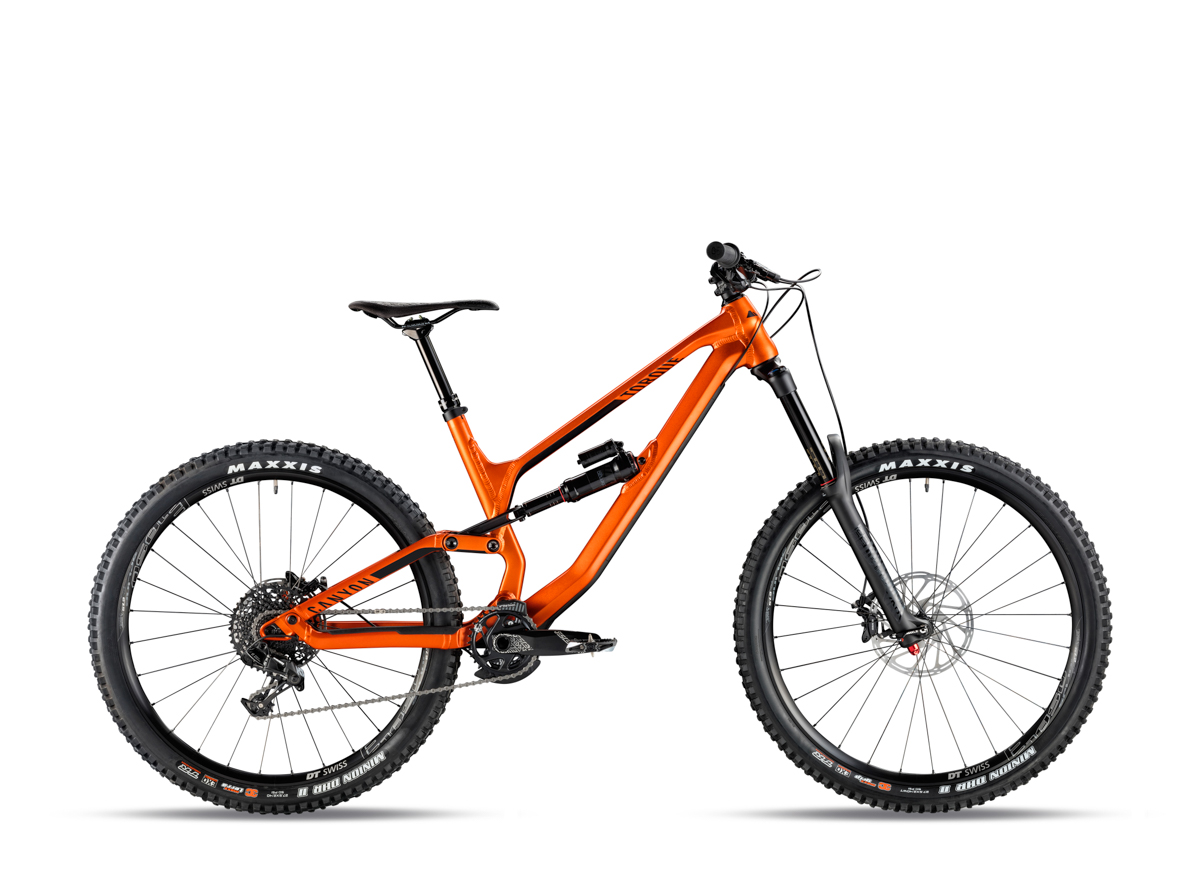Bikes like the Commencal Supreme SX and the Polygon Square One are carving out a new future for the 180mm bike with the help of lighter frames and componentry, combined with today’s wide range gearing.
Now there’s a new kid joining the 180mm club, the reinvented Canyon Torque.





What’s New?
The Canyon Torque forms part of Canyon’s new ‘family’ of bikes consisting of the Spectral, Torque and Sender. All of these bikes share the same ‘three-stage’ suspension design and philosophy (and we expect the 160mm Strive will receive an update at some point in 2018) that we covered in depth in our first impressions piece on the all-new Spectral.
The Canyon Torque forms part of Canyon’s new ‘family’ of bikes consisting of the Spectral, Torque and Sender.

The Torque fits in between the enduro race focused Strive and the Sender downhill bike, pairing 175mm of rear travel to a 180mm fork. With these numbers, there’s no doubt the Torque is aimed squarely at riders who live for the descent and be it by choice or necessity they pedal their way to the top.

So, how does the bike ride?
The new Canyon Torque does what it says on the box, which is a very good thing.
Our first day on the Torque was a complete washout (literally) with regards to testing the bike, as we slid our way down (sometimes on the bike, sometimes not) Madeira’s most technical trails in absolutely torrential rain.

On the second day, however, we got to open the throttle up a bit more, and the bike came into its element. The rear suspension is incredibly supple off the top, providing traction and support, but the mid stroke provides just enough pop for the bike to ride more playfully than its 175mm of travel might suggest.

As we discussed in our first impressions piece on the Spectral, the progressiveness of the ‘three-stage’ suspension is truly exceptional, and we couldn’t bottom the Torque out running 30 percent sag, even on some big, nasty and flat landings on the most hectic of trails.
The Torque really shone riding wide open, technical trails, where its active suspension and forgiving geometry allowed you to make a mistake after mistake and still ride out.
Where the bike struggled a touch was in super tight terrain and European style switchbacks, where its slack geometry and long legs could feel a bit vague if you were trying to snap the bike through tight corners quickly, or pivot on the front end to get around a tight switchback.

While the Torque is impressively playful for a 180mm bike, it does lack some of the poppy character of its shorter travel Spectral sibling, and riding the two bikes back to back affirmed that you need some demanding trails or an ultra-aggressive riding style to get the most out of this bike.
The Torque really shone riding wide open, technical trails, where its active suspension and forgiving geometry allowed you to make a mistake after mistake and still ride out.
Is the Torque a total pig uphill?
Surprisingly not. While you won’t be taking the victory in your local XC series aboard the Torque, the bike climbs very well considering its long legs.

For all but the most technical of climbs we would engage the shock’s lockout, as well as firming up the forks, and we wouldn’t mind if the seat tube was a touch steeper, however we were climbing up roads with a locked-out fork, and climbing off road with the fork open would put you more over the front when the fork sags.
All in all though, with the compression levers engaged there’s only a hint more bob than you might find on a 150mm bike.
What models are available?
There are seven Torque models available in total, with four aluminium models and three models featuring a carbon front end mated to an aluminium rear.

We rode an aluminium frame adorned with top of the line components for the majority of the launch. However the cheaper models come with 11 speed drivetrains and 32 tooth chainrings.

We think that perhaps this gearing might be a touch steep if you’ll be riding up steep access roads as the weight will creep up on the lower end models, but swapping out to a 30 or 28 tooth chainring isn’t too much of an issue.

We rode both an aluminium Torque as well as the CF frameset, and for us, there was only the slightest discernible amount of increased frame rigidity in the CF model. We later asked Fabien Barel about this, and he said there are stiffness gains there, as well as the obvious weight savings, but the large majority of riders wouldn’t be able to perceive the difference in feeling between the two front triangles.
We’re excited to see the Canyon Torque land in Australia. It’s the kind of bike we’re itching to rail down those tough descents that can only be accessed by leg power.